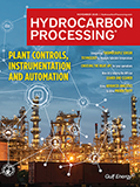Environment
Accelera to power bp's Lingen green hydrogen project in Germany
Accelera™ by Cummins will supply a 100-megawatt proton exchange membrane electrolyzer system for bp's Lingen green hydrogen project in Germany.
Horisont Energi AS: Commercial progress for the Barents Blue project
Horisont Energi is progressing the commercial work and has now passed a milestone for the Barents Blue project by signing the first term-sheet (non-binding) for gas supply from the Snøhvit LNG facility at Melkøya in Northern Norway.
BASF introduces first superabsorbent polymer with product carbon footprint of zero
BASF now offers HySorb® B 6610 ZeroPCF, the first polyacrylate-based superabsorbent polymer marketed with a product carbon footprint of zero for the hygiene industry. The zero PCF is achieved by utilizing renewable energy in addition to the established biomass balance approach in the production process at the Antwerp Verbund site.
Polyplastics to launch 40% glass-filled recycled grade of DURAFIDE (R) PPS
Polyplastics Co. Ltd., a global leader in engineering plastics, has announced plans to launch a 40% glass-reinforced grade of DURAFIDE (R) rG-PPS by December 2025 as part of its mechanical recycling business.
Landus and TalusAg deliver first local green ammonia production in North America
Landus, an Iowa-based agriculture solutions company, and TalusAg, an agriculture technology company, have successfully commenced commercial green ammonia production with the first and only modular systems in North America.
Power2X awards Worley contract for its 250,000-tpy eFuels Rotterdam project
Power2X has contracted Worley to provide engineering and project management services for its eFuels Rotterdam project–a world-scale production facility for sustainable aviation fuel and ultra-low carbon fuels.
Digital Exclusive: Executive viewpoint-Recycled plastic used in roads as Aramco adopts the circular economy
This article details how Aramco is using recycled plastic waste in the construction of new highways and the program aims to reduce emissions and costs, while improving the quality of road infrastructure by utilizing circularity principles
Neste and DHL Group tighten collaboration to reduce logistics emissions
To further strengthen their collaboration on reducing emissions in logistics, DHL Group and Neste have agreed to jointly evaluate how Neste’s renewable solutions such as renewable diesel, also known as “HVO100,” and SAF can support DHL in its decarbonization targets in air and road transportation.
Alfa Laval to acquire NRG Marine, offering ultrasonic anti-fouling solutions
Alfa Laval has signed an agreement to acquire NRG Marine, a leading provider of ultrasonic anti-fouling solutions for marine, oil and gas, and industrial applications, headquartered in the UK.
Digital Exclusive: A unified approach to methane emissions reporting (3)
This article looks at the causes of methane emissions, new technologies to monitor it and pathways to mitigate them in the future.

- NAPCOR releases 2024 PET recycling report highlighting system efficiency gains and continued strength of PET circularity 12/12
- OQ courts other partners for petrochemical complex in Oman as SABIC drops out 12/12
- Brazil's BNDES approves $71 MM for carbon storage project 12/12
- Cuba on edge as U.S. seizure of oil tanker puts supply at risk 12/12
- China oil demand to plateau between 2025 and 2030 12/12
- Germany's PCK refinery says no impact from pipeline leak 12/12




